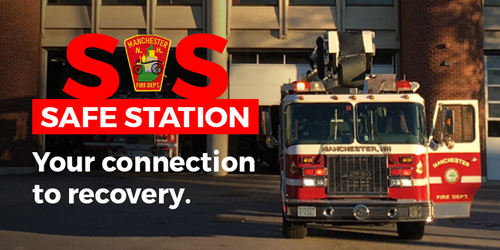An innovative program model in New Hampshire that uses fire departments as an access point to treatment and other services
In May 2016, in an area that has been devastated by opioid-related overdoses, the Manchester Fire Department (MFD) in New Hampshire launched an innovative program called Safe Station. Part of the rational was that a person struggling with a substance use disorder (SUD) may be more comfortable seeking help from a fire department, often viewed as an institution that saves lives, rather than a police department or a hospital.
This community-based program, in which a person comes to a fire department to seek treatment for SUD, includes partners at local hospitals, transport services, regional access services, and SUD treatment centers. Any individual seeking help for a substance use problem can walk into one of the ten Manchester fire departments at any time of day or night to seek assistance. Fire fighters at these stations reported a strong willingness to participate in the program, noting that it is a part of their mission to save lives.
Safe Station can best be characterized as a connection to treatment and recovery with a focus on reducing barriers to accessing resources and providing a safe community for people with substance use and related problems. Safe Station has been replicated to many other fire departments in New Hampshire.
Safe Station is a prime example of a novel community-based response to the opioid crisis and a highly useful resource in the community.









